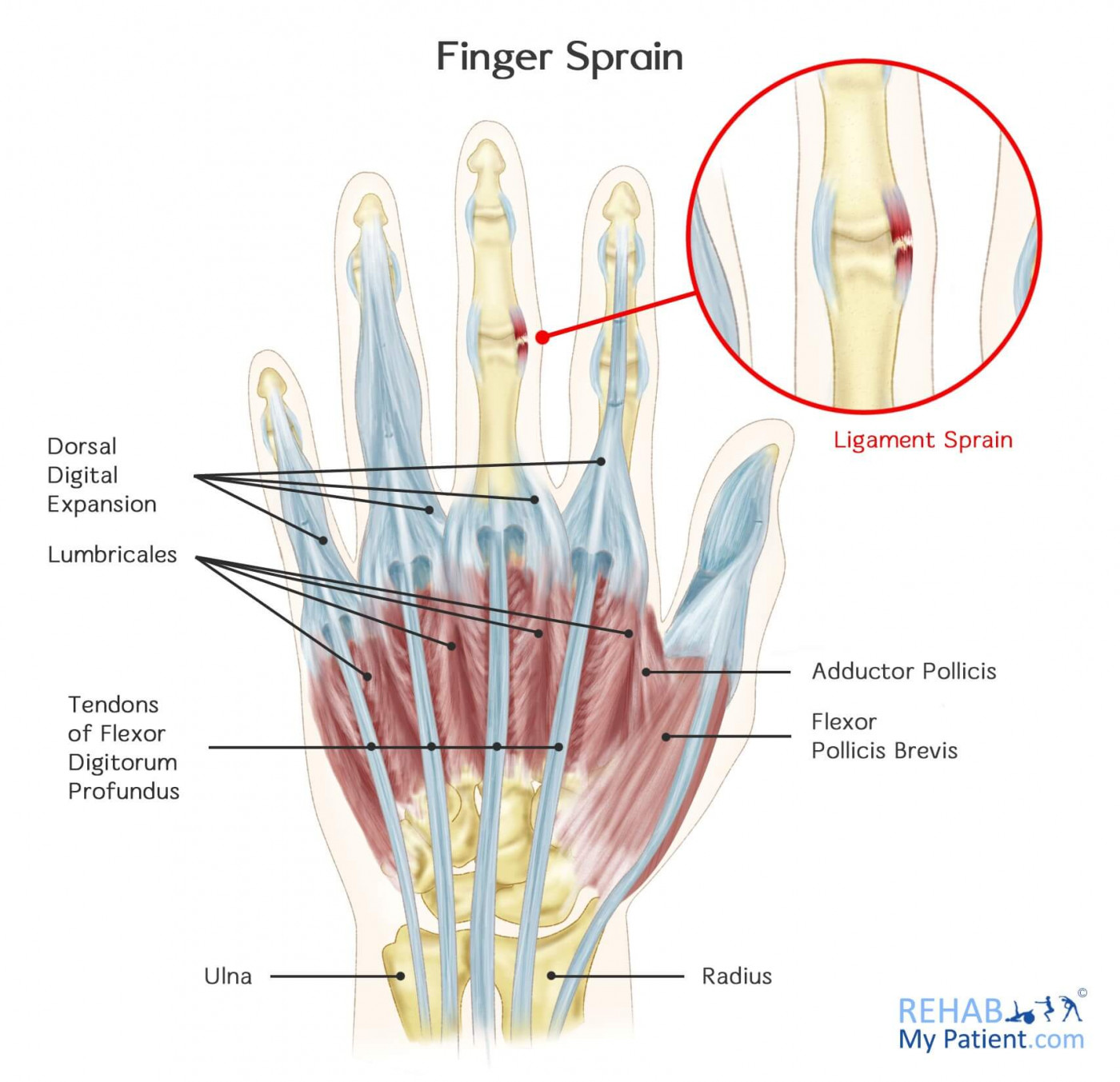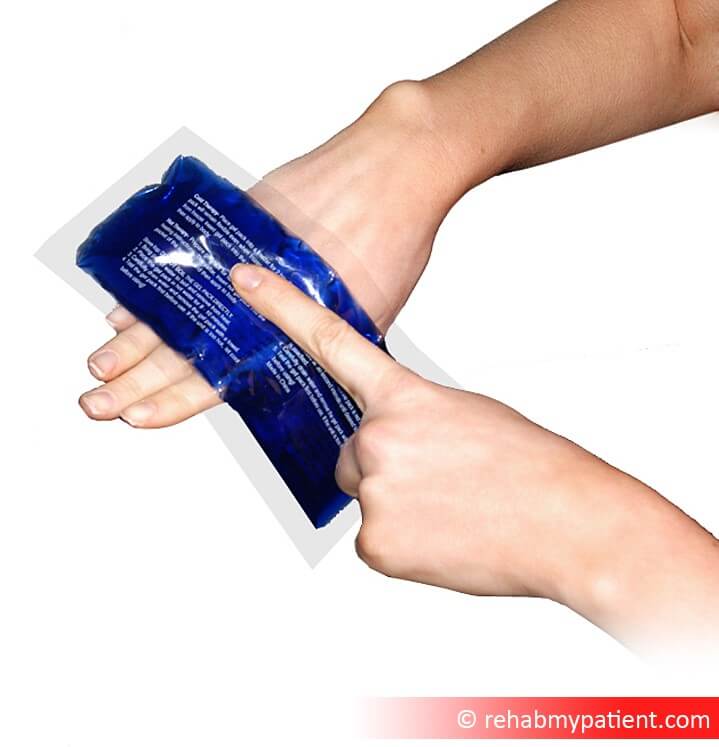Finger Sprain
Posted on 15th Apr 2018 / Published in: Hand/Fingers/Thumb

Finger sprains are injuries to your ligaments or any one of the three joints within the finger. Since these injuries are often referred to as jammed fingers, it only makes sense that they are caused by jamming the finger into another individual or being hit on the top of the finger. Fingers can also be injured from being bent backward. Most of the time, an athlete will end up overlooking the injury because they think it’s nothing more than a finger. Finger injuries can be quite painful, and can take months to heal.
Even though a finger sprain might not be serious in most cases, it’s valuable to get it checked by your therapist to ensure that you are doing everything possible to exercise it correctly.
Finger Sprain Anatomy
Finger sprains are tearing or stretching of the ligaments supporting the small joints within the finger. Ligaments are a strong band of tissue that connects all of the bones to each other.

Finger sprains and tendon damange in the finger are most common during contact sports. Typically blunt trauma or a collision with a player or a moving ball when caught at the wrong angle is enough to sprain the finger.
How to Treat a Finger Sprain:
- Rest
The best thing you can do for the injured finger is to allow it to rest. Alleviating extra pressure on the finger is ideal. Don’t go back to contact sports too quickly. Give your finger time to rest, even though you feel physically fit to go back. Take advice from your sports coach or therapist if you are unsure.
- Ice
Apply ice to the injured finger for five to ten minutes at a time, three to five times per day. Continue doing so until the swelling and pain is gone. Ice works to reduce the swelling and pain in the sprained finger. Wrap your ice pack in a towel. Avoid applying ice directly to the skin.
- Compression
Wrap an elastic bandage around the finger. This works to minimize the amount of swelling in the finger and provide it with support. Make sure not to wrap the area too tightly or you could end up cutting off the circulation to the finger. Cohesive or Elastoplast strapping works well and this can be ordered from the internet.

- Medication
You might need to take an over-the-counter medicine, prescription pain medicine or topical pain medicine to help relieve pain and reduce swelling. Topical gels or anti-inflammatories such as ibulieve can help. Once you have the swelling to a minimum, the amount of pain you feel will decrease as well. Use for short term only.
Tips:
- To help reduce the risk of getting a sprain in the first place, make sure you learn and practice proper techniques when playing sports.
- Playing sports that involve the hands can cause sprains to occur when proper precautions aren’t taken during the activity.
- Poor balance can cause you to fall onto your hand and sprain the finger.
- If you are regularly getting fingers sprains, consider that you may have poor coordination. Improving finger and hand dexterity and coordination can benefit you. Ask your therapist for exercises.
- If you play contact sports, or ball sports, strapping the small joints of the fingers with Elastoplast strapping can give them a lot of added protection.
Sign UP
Sign up for your free trial now!
Get started with Rehab My Patient today and revolutionize your exercise prescription process for effective rehabilitation.
Start Your 14-Day Free Trial